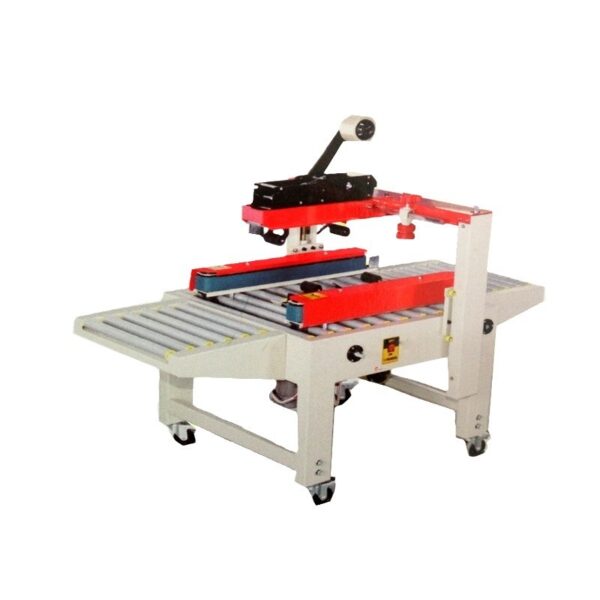These things can be hard to learn. That can cause mistakes and slow you down. A poorly operated machine can make your cartons look terrible, or you might have to throw away a bunch of expensive cartons. Knowing how to run your machine properly allows you to package things quickly and easily.
Carton machines work by automating the folding, packing, and sealing processes of cartons. Operators must follow setup steps, perform regular maintenance, and make necessary adjustments to keep the machine running smoothly.
In this guide, we will break down the operation process into manageable steps.

Understanding the Basic Operation of a Carton Machine
A carton machine is an essential tool in modern packaging lines, automating the folding and assembly of cartons. The machine uses mechanical arms, suction cups, and adhesive application systems to fold flat cardboard sheets into pre-formed cartons. Once shaped, the cartons are filled with products and sealed, ready for labeling or additional packaging.
The machine’s control system, often powered by a PLC (Programmable Logic Controller), governs each step of the process, ensuring consistency. For successful operation, operators must calibrate the system to account for different carton sizes and materials, much like with other equipment such as a labeling machine or a Liquid Filling Machine.
How a Carton Erecting Machine Works
Carton erecting machines are designed to take flat cardboard sheets and convert them into folded cartons, which are then ready for filling. The process begins with vacuum suction cups that pick up the flat sheet and guide it into folding mechanisms. The folding arms then form the box shape, while adhesive or tape is applied to secure the carton.
These machines are highly automated, requiring operators to load the cardboard sheets and monitor the process. Ensuring that the vacuum cups align properly and the adhesives are applied evenly is crucial for the machine’s success.
Key Steps for Setting Up the Cartoning Machine
Setting up the cartoning machine involves several critical steps. First, operators must ensure that the machine is powered correctly and that the carton sheets are loaded into the feeder. Adjusting the suction mechanism to match the carton size and weight is also essential to avoid misalignments.
Next, calibrate the machine’s folding arms, suction cups, and adhesive applicators. This initial setup ensures the cartons are correctly shaped and sealed. Running a test batch of cartons is a good practice to catch any potential issues early.
Adjusting the Machine for Different Carton Sizes
To accommodate different carton sizes, operators must adjust the machine settings accordingly. This process involves calibrating the machine’s folding mechanisms and adjusting the adhesive application to ensure proper sealing. Similar to a Flat Labeling Machine or a Vacuum Packaging Machine, these adjustments help to guarantee that the product fits within the carton and that the carton remains securely sealed during transport.
Operators should refer to the machine’s manual for specific instructions on how to adjust these settings. Most machines offer flexible adjustment features, making them versatile for various packaging needs.
The Role of Packaging Sensors in Carton Machines
Packaging sensors play a crucial role in ensuring the proper alignment and operation of the carton machine. These sensors detect the position of the carton and trigger actions such as folding, applying adhesives, or sealing. If the sensors are not correctly calibrated, it can lead to misaligned cartons, unsealed boxes, or even machine jams.
Operators need to check these sensors regularly and adjust them depending on the type of carton being used. A malfunctioning sensor can cause downtime, so preventive maintenance is key.
Ensuring Safe Operation
Safety is paramount when operating a carton machine. Before operating the machine, ensure it is grounded correctly and that all voltage settings are within the manufacturer’s specifications. Only trained personnel should handle the machine, as improper operation can lead to accidents.
In addition, emergency stop mechanisms should always be within easy reach, and operators must be familiar with how to use them. Safety protocols are similar to those for other packaging machines, such as a Bottle Filling Machine or a Taping Machine.
Carton Machine Maintenance and Troubleshooting
Regular maintenance of a carton machine is necessary to keep it operating efficiently. Operators should perform routine checks on the machine’s folding arms, adhesive applicators, and suction mechanisms. Cleaning the sensors and ensuring the alignment of moving parts is essential for avoiding breakdowns.
Common problems include misaligned cartons, insufficient glue application, or jamming within the folding mechanisms. Addressing these issues promptly helps to minimize downtime and improve the overall efficiency of the production line.
Tips for Troubleshooting Common Issues
When troubleshooting carton misalignment, the first step is to check the calibration of the folding arms and suction cups. If glue or adhesive is not being applied correctly, inspect the adhesive reservoir and ensure the nozzles are clean and unobstructed.
If the machine jams frequently, it may be due to misaligned sensors or improperly loaded cardboard sheets. In such cases, a thorough inspection of the loading and folding mechanisms is necessary to identify and fix the root cause.
Safety Precautions and Best Practices
Always follow the machine’s safety guidelines to avoid injury or damage. Make sure the machine is regularly maintained and that only trained personnel operate it. Operators should avoid using the machine in dusty or damp environments, as this can affect its performance. This is particularly important when handling delicate packaging machinery, such as a barcode printer or industrial machines.
Advanced Features for Automated Cartoning Machines
Modern carton machines come with advanced features such as real-time monitoring, adjustable speed settings, and PLC-controlled systems. These advanced features help streamline the production process by reducing manual intervention and allowing for continuous operation. Automated features can help adapt the machine to different product lines quickly, improving overall efficiency and throughput.
Conclusion
A well-maintained and properly operated carton machine ensures efficient, high-quality packaging. By following setup instructions, performing regular maintenance, and understanding the machine’s functionality, operators can optimize their packaging process for long-term success.









